Try This: Sandcarve a Photo on Glass
Sandcarving can be used to personalize unique gift items. Follow these steps to create a one-of-a-kind gift.
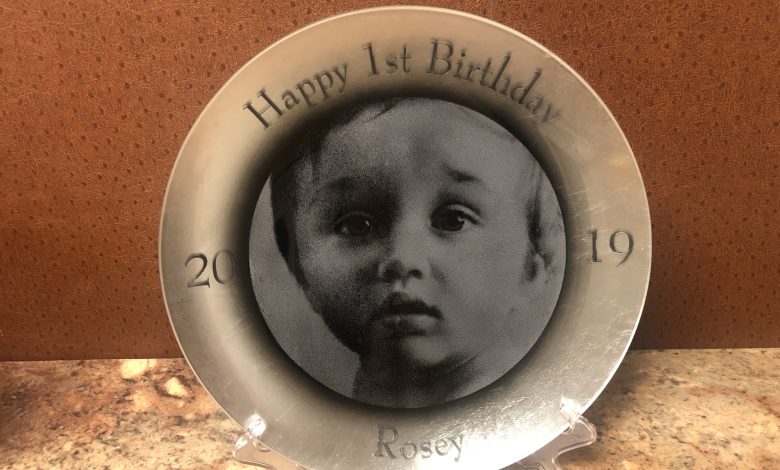
A sandcarved photo is a unique gift that communicates personalization for your customers. A sandcarved photo can be used for an anniversary or birthday gift, as a memorial piece, or can fulfill many other options. Traditional sandcarved photos are etched as a half-tone screen. The half-tone screen is a dot pattern. There are other patterns available for photos such as a dithered. These screens create a different look to the etched photo.
Sandcarved photos look best etched on a slightly darkened background such as wine bottles, black glass, black granite, and any glass that has a shaded/darkened area. The darkened area provides a contrast to the etched photo. Clear glass can be used, but the etched photo may not be clearly seen in a bright or well-lit area. One option to avoid this is to place a dark background (such as black felt) at the back of the glass, which provides a contrast to the etched photo.
Let’s talk about the steps needed to sandcarve a photo on glass. Following is a materials-needed list as well as the tutorial.
Materials needed:
- Photoshop or Corel PHOTO-PAINT graphic program
- SR3000 3Mil Self-Stick film (or similar film)
- Plastic squeegee
- Black glass plaque
- Abrasive – silicon carbide 150 grit is used for project (aluminum oxide 150 grit-220 grit can be used)
- Blasting pressure – 30 PSI
Step One:
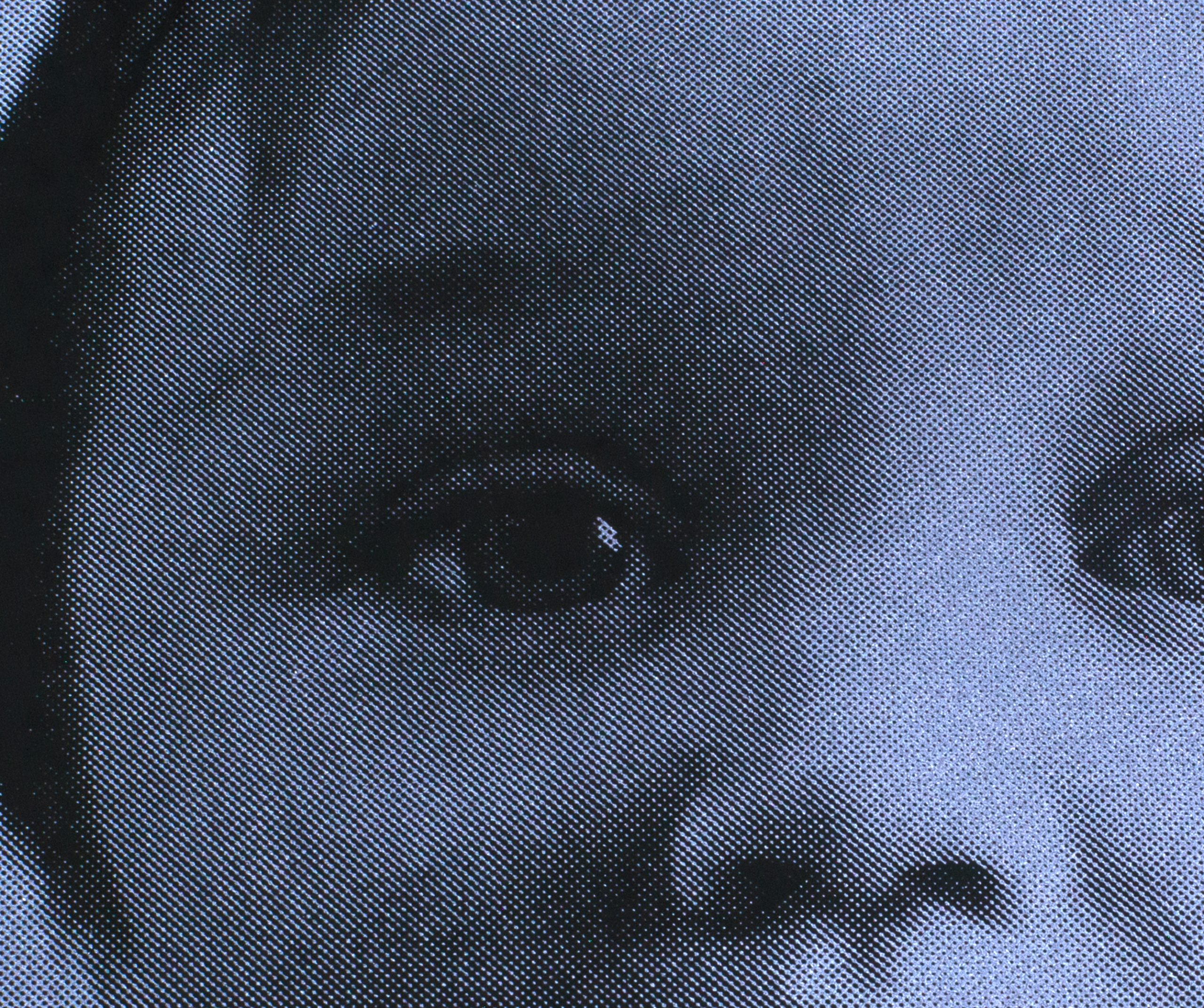
(All images courtesy Liz Haas)
Convert the photo to a half-tone screen in Photoshop or Corel PHOTO-PAINT. Some adjustments may be required such as lightening dark areas and darkening light areas. Print the half-tone image as a negative and produce it on the SR3000 3Mil Self-Stick film.
Step Two:
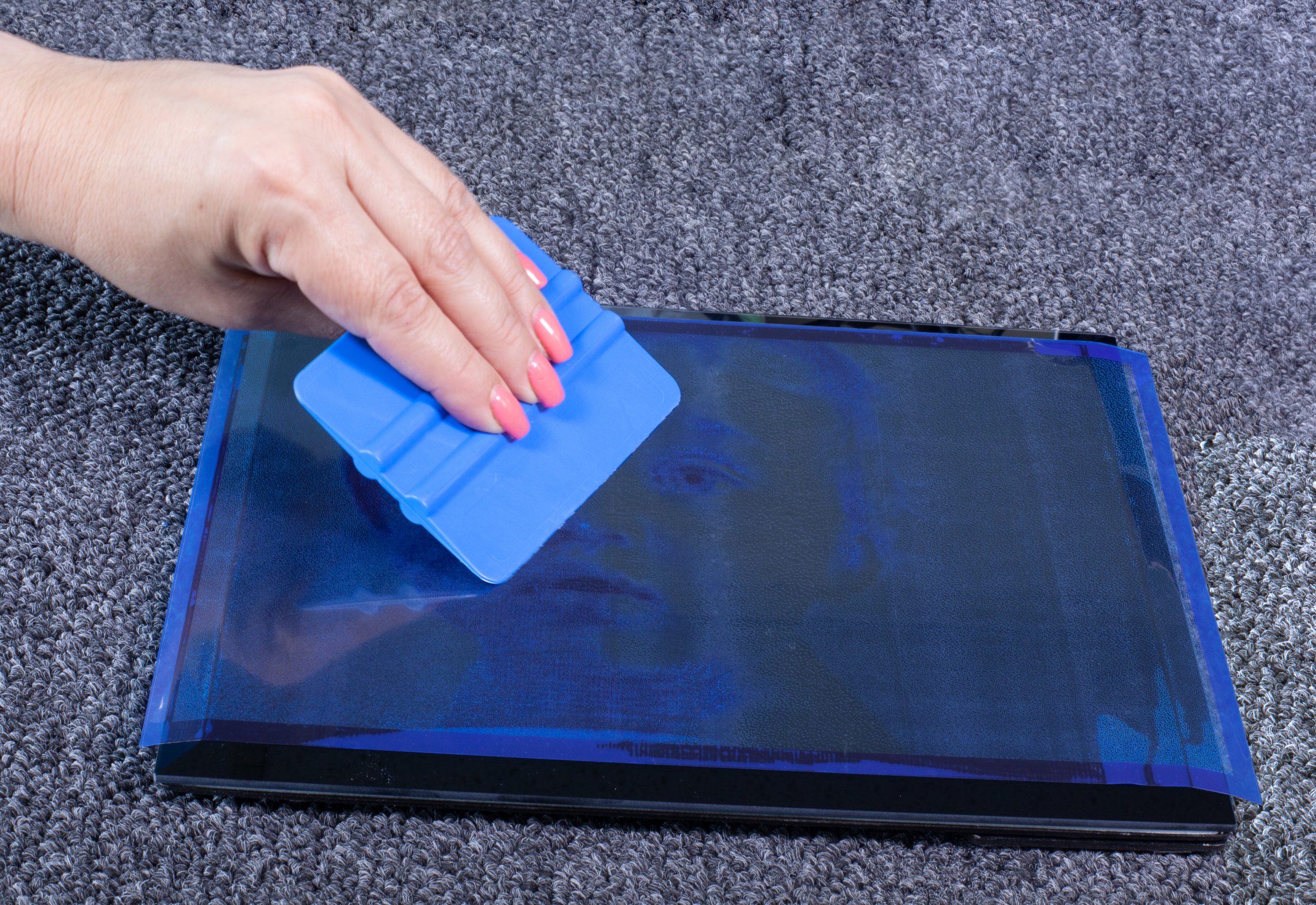
Apply the photomask to a clean glass surface and squeegee well with pressure.
Step Three:
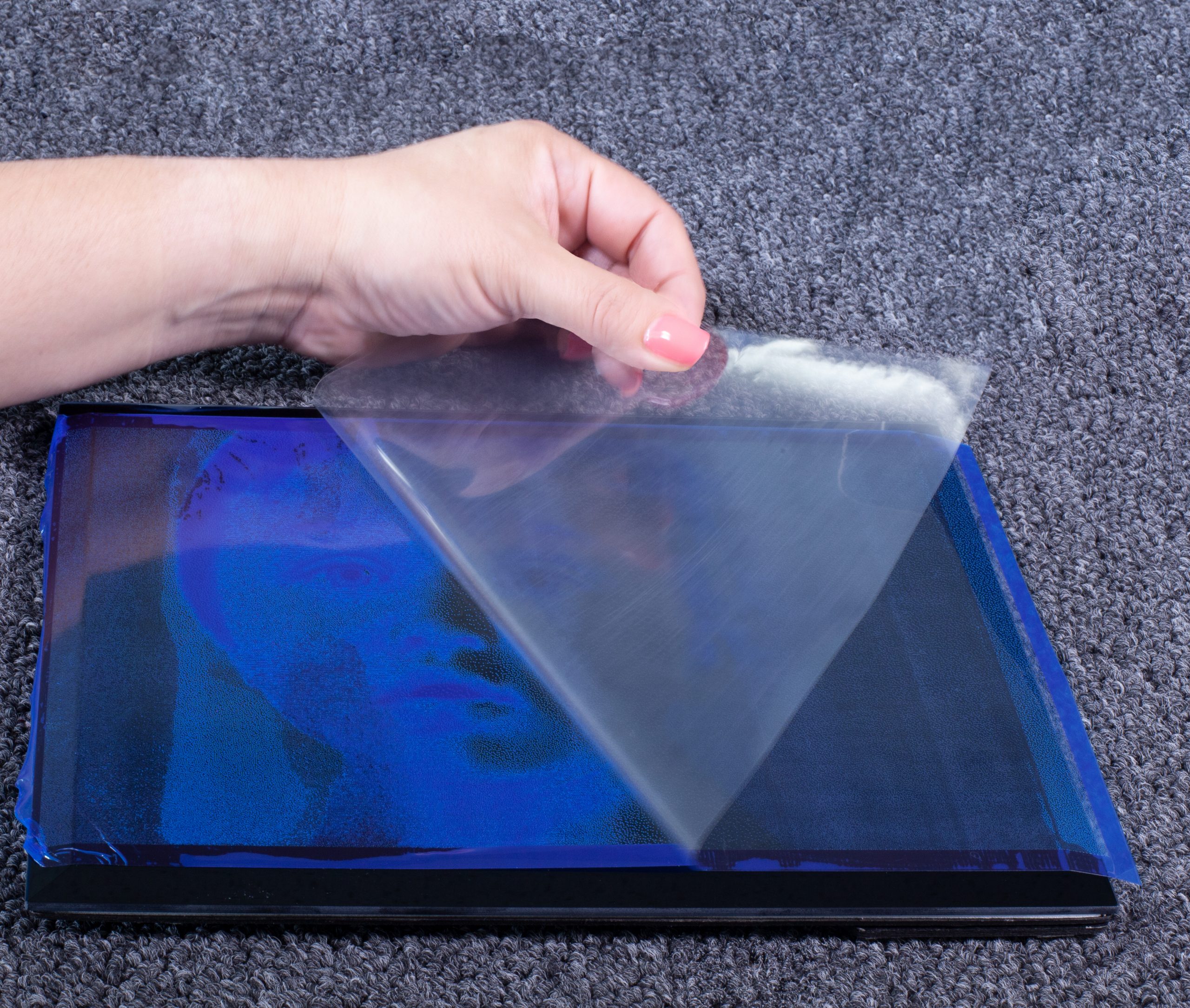
Peel away clear liner. If air bubbles appear after the liner is removed, simply use your finger to roll out the air bubble. Do not rub as this can loosen the dot or pattern.
Step Four:
Apply tape to the exposed area. Painters tape was used to cover the exposed glass in this project.
Step Five:
Place the glass piece in your sandcarving system. Blast at a 90-degree angle using a side-to-side motion. The blasting distance is approximately 8″ from the plaque. Once the first pass is complete, move the nozzle in a couple of inches, bringing it closer to the glass. For best results, blast a surface etch. Blast until a surface etch is achieved. A deep blast may result in the appearance that some of the resolution of the photo is lost.
Note: Blast in slow, even strokes side to side then rotate the plaque and repeat blasting.
Step Six:
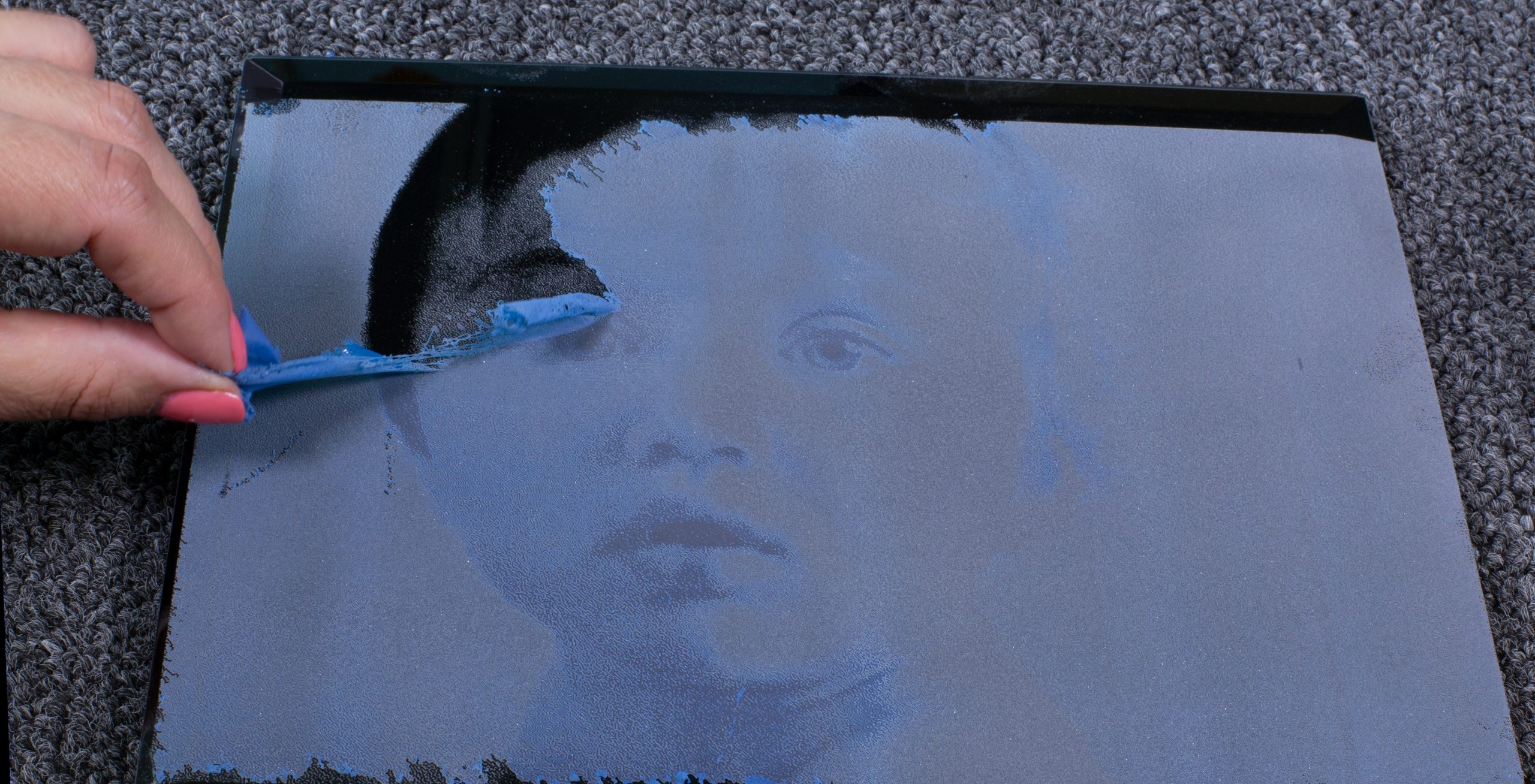
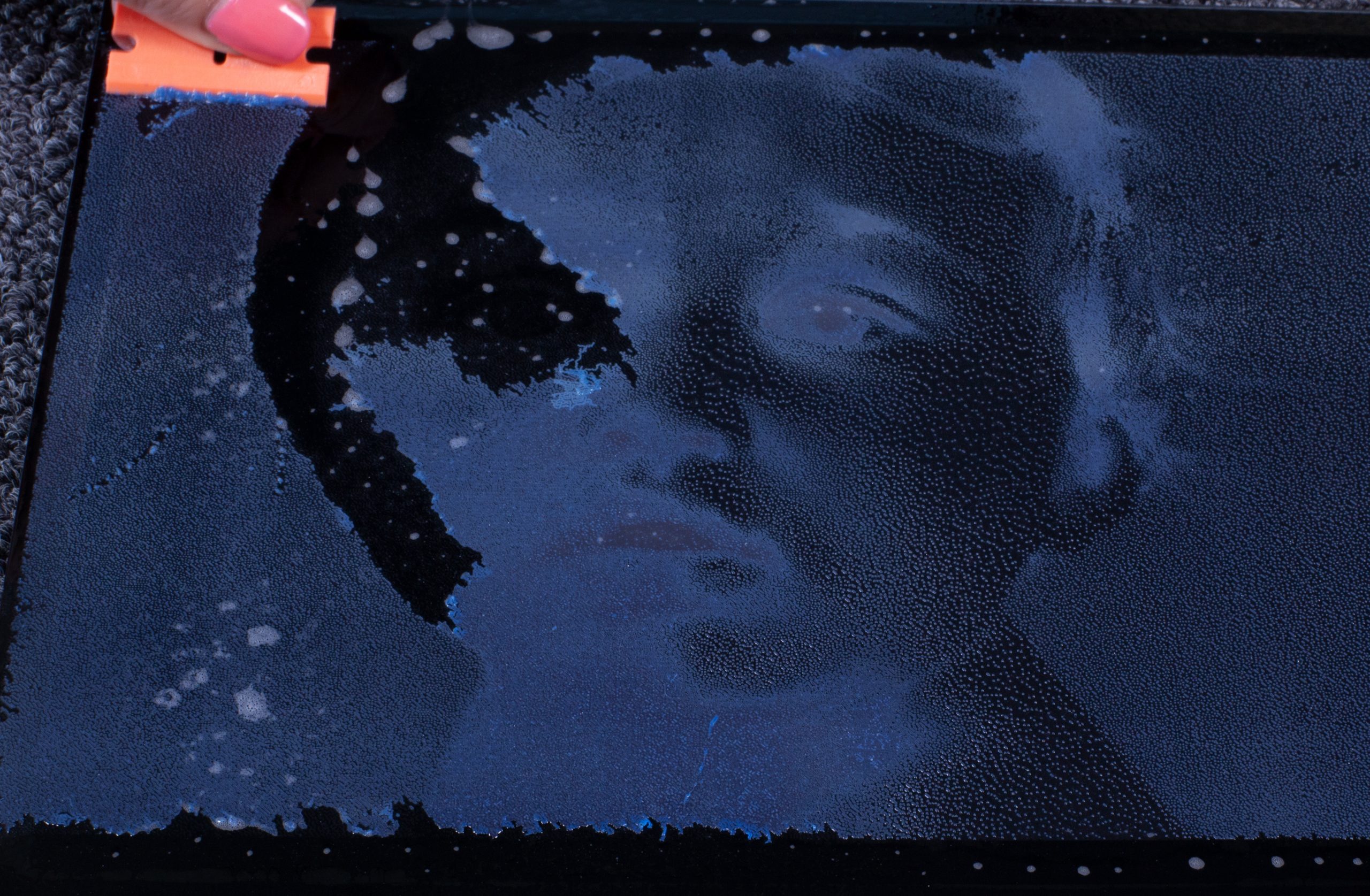
Once blasting is complete, remove the tape and photoresist film. Rinse off any abrasive or use glass cleaner and a plastic razor to remove the photoresist. Dry the glass with a lint cloth.
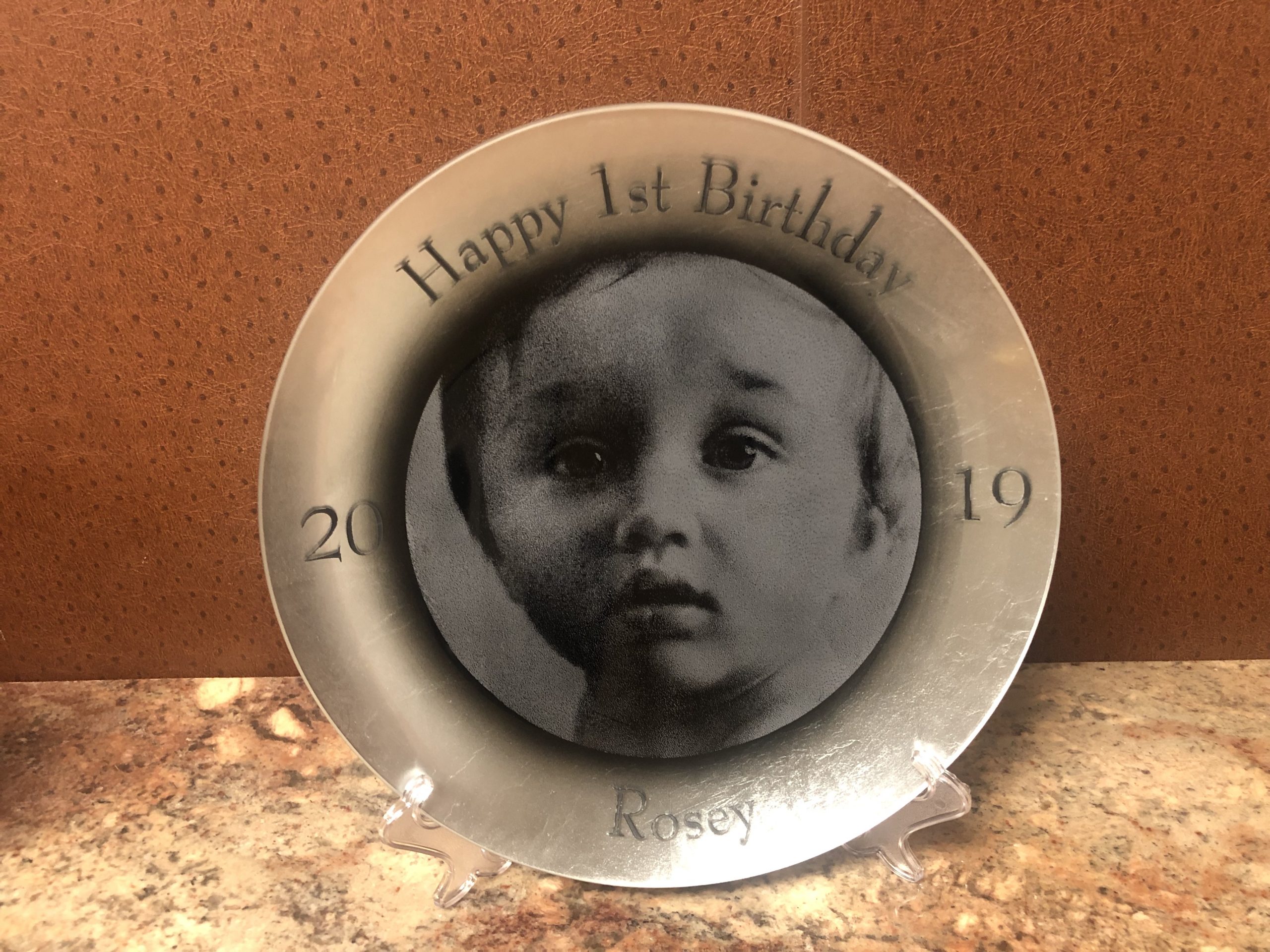
The finished product.